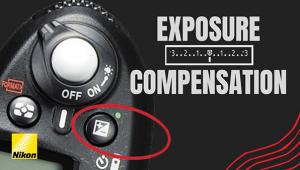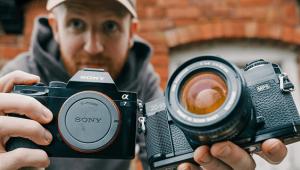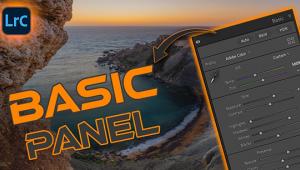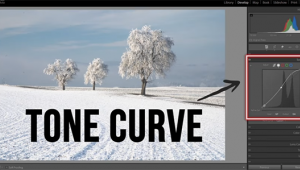Sigma’s 18-200mm f/3.5-6.3 DC OS Lens; The First Multipurpose Sigma Zoom With A Built-In Image Stabilizer Page 2
Because the Nikon D40 and D40X do not include an AF drive motor, they can autofocus only with lenses equipped with an AF motor, such as the Sigma HSM and Nikon Silent Wave (AF-S) series. Although the Nikon mount version of the 18-200mm OS zoom was not available at our press time, Sigma confirmed that the model for Nikon will include an AF motor so it will be fully compatible with all Nikon D-SLRs. It's not likely to be the ultrasonic HSM type since that's not being used in the Canon mount version. However, it will allow for autofocus with the D40 and D40X and any future Nikon D-SLRs that omit the AF drive motor.
 |
|
|
Stabilizer Evaluation
Because blur from camera shake is the primary cause of unsatisfactory pictures,
the Optical Stabilizer is a valuable amenity. When shake is detected, a signal
is sent to a special motor with instructions to shift a group of lens elements
in the appropriate direction to counteract the effect of lens shake. This causes
incoming light rays to be refracted so the image is returned to the center of
the frame; consequently, the projected image is stable, allowing for sharper
pictures.
Some of the recent Canon IS and Nikon VR lenses can be used with the stabilizer
when the camera/lens is mounted on a tripod. However, Sigma recommends disengaging
their OS system when using a tripod unless the camera is being moved for panning.
That's not a drawback in my estimation. First, there's no need for
a stabilizer when the lens is rock steady and this all-purpose 18-200mm zoom
is not the type of lens that's typically used on a tripod.
The Sigma OS technology was certainly effective, as I discovered while shooting
from the vibrating deck of a ship or inside dark museums and churches. Without
the OS system, I generally needed to use a 1/320 sec shutter speed (on solid
land) for
razor-sharp images at the longest focal length. After activating the stabilizer,
I was able to make equally sharp images at 1/80 sec, and sometimes, even at
1/50 sec. Bracing my elbows on the roof of a car or a concrete wall produced
even more impressive results: professionally sharp images at 1¼30 sec
at 200mm, a 320mm equivalent with the XTi camera.
 |
|
|
Optical Evaluation
This rugged zoom with SLD and aspherical elements proved to be a fine performer
during extensive travel photography. While examining my hundreds of JPEG and
raw format images of people, places, and events, I made the following notes:
· Shading (darkening at the corners) is visible--though not obvious--in
images made at wide apertures, especially at very short and very long focal
lengths. Shading is typical with all affordable zoom lenses, but this Sigma
model is better than average. Edge brightness is quite acceptable by f/5.6 at
wide angle and by f/8 at telephoto.
· Barrel distortion (bowing outward of lines near the edges) was certainly
visible at wide angle focal lengths as it was with every all-purpose zoom that
I have ever tested. But since lenses of this type are very rarely used for serious
architectural photography, I consider this issue to be irrelevant.
· The multilayered coating plus the lens hood combine for very effective
flare control; that was certainly useful while shooting on very bright, sunny
days in Italy.
· Image quality is most impressive at focal lengths from about 18mm to
135mm, particularly in the f/8 to f/16 range.
Center sharpness is high even at f/5.6, but it's worth stopping down for
maximum edge sharpness.
· At longer telephoto focal lengths, it's wise to avoid using f/5.6
or f/6.3 unless you plan to make only 4x6" prints, which will look just
fine. By f/8, center sharpness is high but there's some softness at the
edges. That's not a problem in people pictures where the subject is usually
close to the center, but for photos of buildings and landscapes, it's
worth stopping down to f/11 or f/16. My best long telephoto shots made for very
good 8.5x11" enlargements, the largest size that most families usually
make or order.
· This lens can focus as close as 17.7", useful for filling the
frame with a blossom, especially at longer focal lengths. I was most satisfied
with images made at f/11 or f/16; they look great when printed letter-size.
Aside from the extra depth of field, this aperture range produced the best edge-to-edge
sharpness and resolution of fine detail. (While the OS system can minimize the
need for a tripod, no Image Stabilizer can prevent blur caused by wind-induced
motion; that still requires fast shutter speeds.)
 |
|
 |
|
|
Final Assessment
Like most zooms in the affordable or all-purpose category, this one provided
the best edge-to-edge sharpness and brightness at mid-size apertures. By comparison,
Sigma's large/expensive/fast pro lenses are optimized for high performance
at wide apertures. That's a benefit because it allows for using faster
shutter speeds at low ISO levels where any camera provides the "cleanest"
images. On the other hand, this zoom's Optical Image Stabilizer reduces
the need for fast shutter speeds to prevent blur from camera shake, making ISO
100 suitable for most daylight photography. Switch to ISO 400 when using a polarizer
or on very dark, overcast days when using mid-size or smaller apertures. Most
of today's D-SLR cameras produce excellent image quality at ISO 400, certainly
adequate for very nice 11x15" prints.
The Optical Stabilizer makes this versatile Sigma zoom a particularly fine choice
for any occasion when you simply don't want to carry a bagful of lenses.
Especially on a compact D-SLR, the lens would be a great companion when hiking,
cycling, touring, or during long outings with your family. After all, this 28-300mm
(approximate) equivalent lens covers 80 percent of the most popular focal lengths
in a single barrel. Sure, there are smaller/lighter/more affordable all-purpose
zooms without a stabilizer including some from Sigma. But if you agree that
the OS system adds genuine value, you'll gladly pay a bit more and accept
the slightly greater size/weight.
No OS Lenses For Sony Or Pentax Mounts
Sigma has no plans to make OS lenses in Sony Alpha/Maxxum or Pentax mount, because
those D-SLR bodies (except for older Pentax *istD models) already incorporate
a CCD-shift stabilizer.
For more information, contact Sigma Corporation of America, 15 Fleetwood Ct.,
Ronkonkoma, NY 11779; (800) 896-6858; www.sigma-photo.com.
A long-time "Shutterbug" contributor, stock photographer Peter K.
Burian (www.peterkburian.com)
is the author of "Mastering Digital Photography and Imaging" and
the co-author of several "Magic Lantern Guide" books about 35mm
and D-SLRs. He also teaches two online digital photography courses at BetterPhoto.com.
- Log in or register to post comments
































